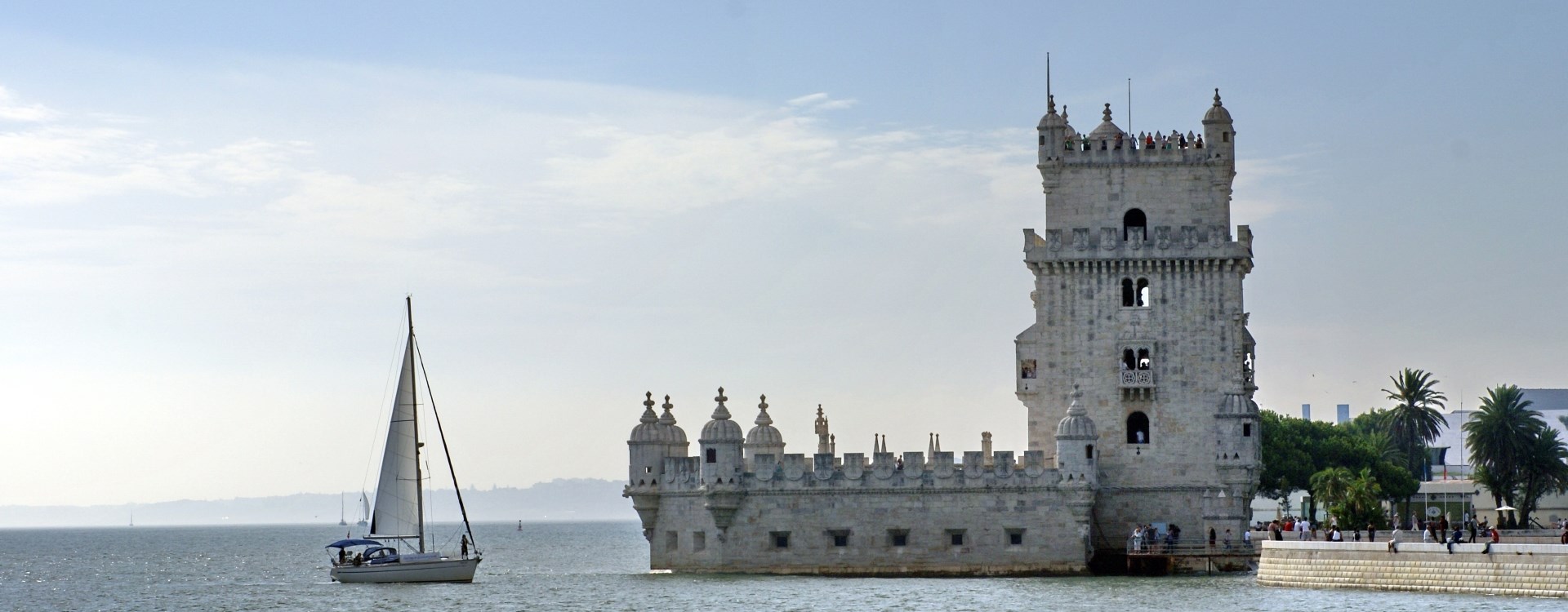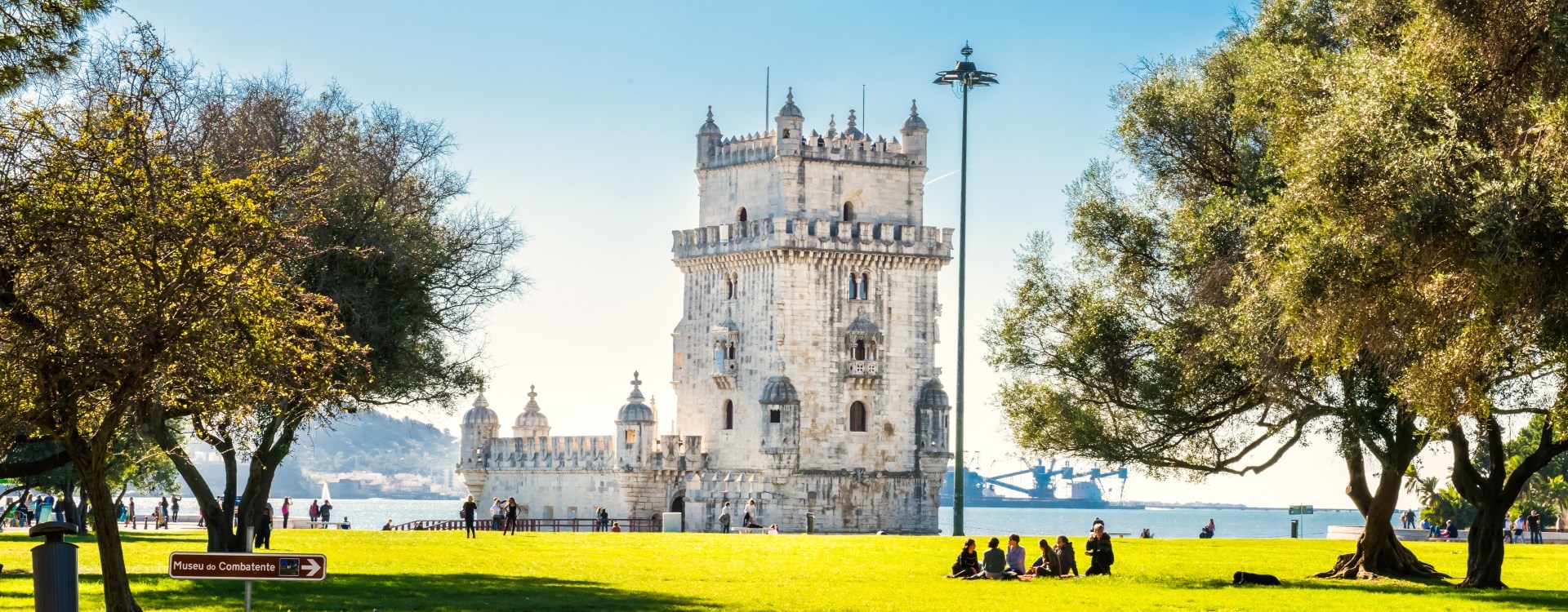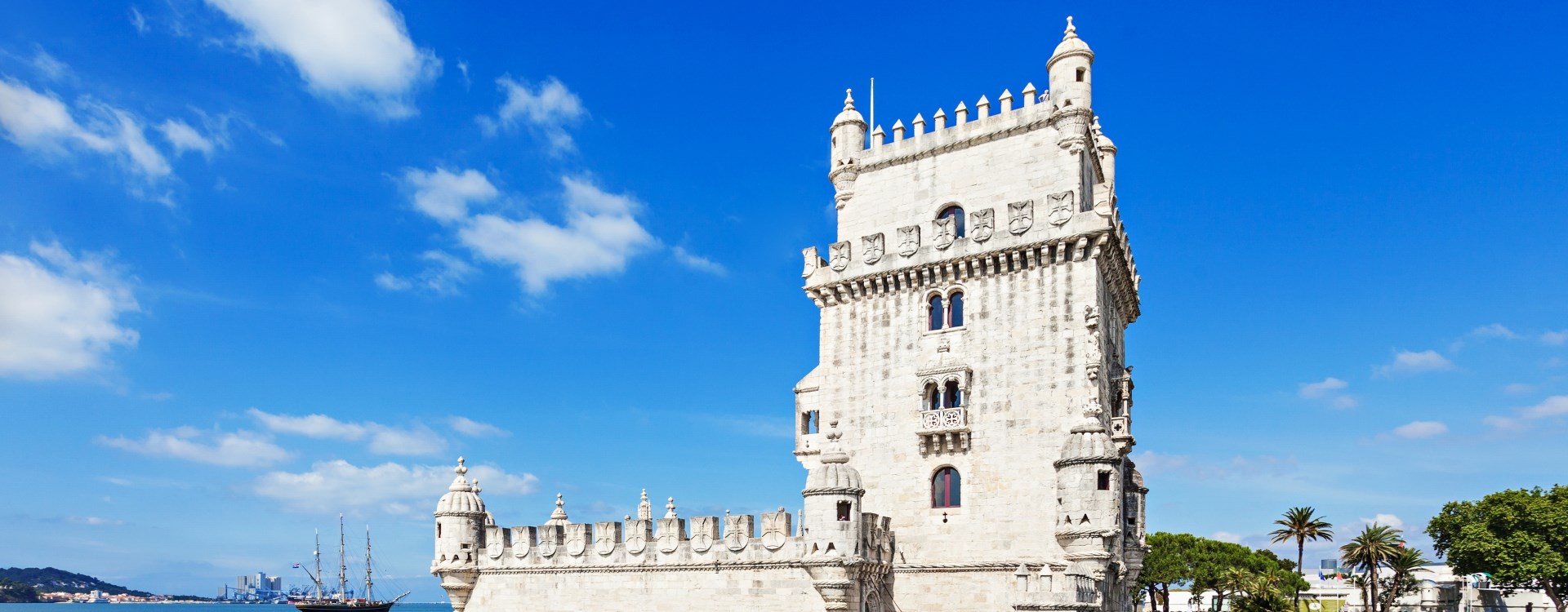Known throughout the world, Belém Tower, also called St Vincent Tower, is one of Portugal's cultural and architectural iconic monuments. Classified as World Heritage site by UNESCO, it is often presented as the country's picture.
King Manuel I built the Tower in 1514, on Belem beach, with a privileged view of the Portuguese ships that left for the Discoveries. It served as a bulwark and its dungeons held many prisoners over the centuries. It was also part of an ancient defense system between the bastion of Cascais and the fortress of St. Sebastian in Caparica (on the opposite bank of the Tagus River).
As means of attack and defense evolved, the Tower gradually lost its defensive vocation and began to perform various other functions. It was a customs file, telegraph signal station and a lighthouse (a luminous beacon was placed on the bulwark terrace in 1865).
Its decoration reflects the main elements of the Manueline aesthetic, with ropes, armillary spheres, crosses of the Military Order of Christ and naturalistic items. Originally surrounded by water, the changes in the Tagus River led to its "approach" to terra firma. In 1983, an artificial lake was created around the tower, so that it remained in the water. The access is currently made through a small bridge.
All these arguments make an event in the Tower's Bulwark Room an unforgettable one.
Co-financed by:

Região de Lisboa
Lisboa
Facilities & Services
General Description
Contacts
Map
Partially accessible for people with reduced mobility or disabilities.
Dinners, cocktails, cultural events, special events (ex: social or academic).
Bulwark Room (80 seats);
890 sqm
80
Torre de Belém, 1400 - 206 Lisboa
DGPC/
October to April from 10am to 5.30pm (last entry at 5pm). May to September from 10am to 6.30pm (last entry at 6pm). Closed on Mondays and on 1st January, Easter Sunday, 1st May and 25th December.
Isabel Cruz Almeida

Top






